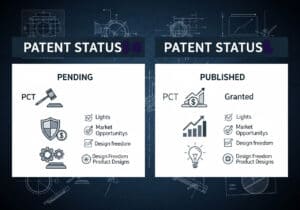This is our latest selection of worldwide publications and patents in english on Thermosets, between many scientific online journals, classified and focused on thermoset, epoxy resin, bakelite, cross-linking, melamine resin, phenolic resin, polyurethane, curing, polyimide, polyester resin, vinyl ester resin, silicone resin, thiolyte, vitrimer, bismaleimide resin, post-curing, polybenzoxazine, cyanate ester resin and polybenzoxazine.
Photoconversion curable composition, cured film comprising photoconversion curable composition, and image display device comprising cured film
Patent published on the 2025-06-26 in WO under Ref WO2025135381 by SOLUS ADVANCED MAT CO LTD [KR] (Song Yookyung [kr], Shin Hwangyu [kr], Lee Sunhyung [kr])
Abstract: The present invention relates to a photoconversion curable composition, a cured film comprising the photoconversion curable composition, and an image display device comprising the cured film. The curable composition of the present invention uses cross-linking ligands surface-modified on quantum dots to enable surface uniformity of a coating film and low viscosity to be implemented, and the curable composition is used to improve thermal stability of a thin film.[...]
Our summary: Photoconversion curable composition enables surface uniformity and low viscosity, improving thermal stability of thin film for image display devices.
photoconversion curable composition, cured film, image display device, quantum dots
Patent
Blockchain-Enabled Federated Learning with Knowledge Distillation for Intrusion Detection
Published on 2025-02-17 by Mohammed Shalan, Md Rakibul Hasan, Yan Bai, Juan Li @MDPI
Abstract: The increasing adoption of smart home devices has raised significant concerns regarding privacy, security, and vulnerability to cyber threats. This study addresses these challenges by presenting a federated learning framework enhanced with blockchain technology to detect intrusions in smart home environments. The proposed approach combines knowledge distillation and transfer learning to support heterogeneous IoT devices with varying computational capacities, ensuring efficient local training wit[...]
Our summary: Study presents a blockchain-enabled federated learning framework for detecting intrusions in smart home environments. The approach combines knowledge distillation and transfer learning to support heterogeneous IoT devices, ensuring efficient local training without compromising privacy. Results show significant improvements in intrusion detection accuracy, particularly for resource-constrained devices.
Blockchain, Federated Learning, Knowledge Distillation, Intrusion Detection
Publication










